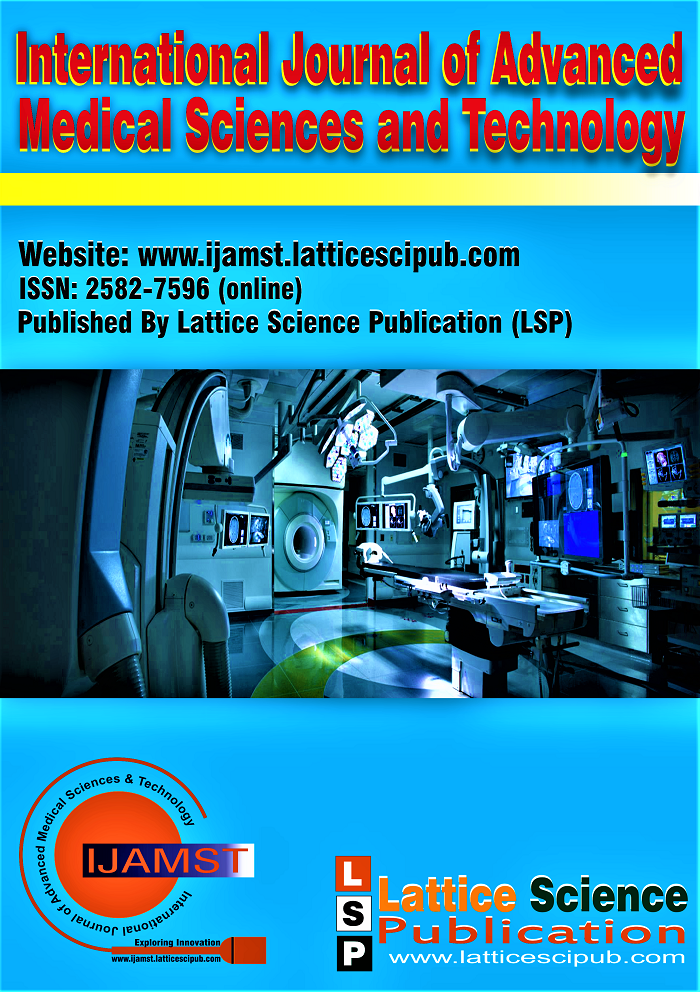Strategies For Safety: A Mixed Method Study of Communication, Teamwork and Health Professional Attitudes When Implementing Multidisciplinary Simulation in The Emergency Department
Main Article Content
Abstract
The Emergency Department (ED) team delivers care to critically unwell patients. Within this, there are a range of complexities and responsibilities identified. Technical skills can be taught in lectures and books; however, the newly evolving phenomenon of focusing on non-technical medical skills has advanced over time. Using non-technical skills, such as communication and human factors, can influence the team’s functioning, which could potentially influence a positive outcome of a critical care event. This study explores whether multidisciplinary simulation training, focusing on non-technical skills, can improve participants’ communication and teamwork and if regular simulation practice can influence healthcare staff attitudes towards embedding a regular simulation program at a local site. A convergent mixed method approach was used to determine staff attitude towards a newly implemented simulation programin the hospital ED. Data was collected over six weeks. The quantitative component measured teamwork and communication with Guise’s validated and reliable tool, the Clinical Teamwork Scale (CTS). Further data using a developed evaluation survey provided participant feedback pre and post-simulation. Thirty-two participants, sixteen nurses and sixteen doctors, were surveyed. The results could suggest a trend of a positive outlook towards implementing a regular simulation practice. However, further analysis would be required. A common theme was participant confidence post-simulation practice and willingness to participate in future simulations. Baseline opinions from all participants were positive. The study has generated valuable insight towards staff attitudes toward MDT simulation in the ED setting. The evidence can further support the implementation of a regular simulation program.
Downloads
Article Details

This work is licensed under a Creative Commons Attribution-NonCommercial-NoDerivatives 4.0 International License.
How to Cite
References
Australian Resuscitation Council, Advanced Life Support Level 2. 3rd ed, ed. A.R. Council. 2016, Melbourne, Australia.
Wong, A.H.-W., et al., Making an "Attitude adjustment". Using a Simulation-Enhanced Interprofessional Education Strategy to Improve Attitudes Toward Teamwork and Communication. Simulation in Healthcare: Journal of the Society for Simulation in Healthcare, 2016. 11(2): p. 117-125. [CrossRef]
Bilotta, F.F., et al., Impact and Implementation of Simulation-Based Training for Safety. The Scientific World Journal, 2013. 2013: p. 652956. [CrossRef]
Murphy, M., A. McCloughan, and K. Curtis, The impact of simulated multidisciplinary Trauma Team Training on team performance: a qualitative study. Australasian Emergency Care, 2019. 22(1): p. 1-7. [CrossRef]
Bahr, N., et al., Modelling variation of clinical team processes with multiple sequence alignment. Sage Journals, 2019. 12(1). [CrossRef]
Bradley, N.L., et al., Multidisciplinary in-situ simulation to evaluate a rare but high-risk process at a level 1 trauma centre: The "Mega Sim" approach. The Canadian Journal of Surgery 2018. 16(5): p. 357-360. [CrossRef]
Bond, W.F., et al., The use of Simulation in Emergency Medicine: A Research Agenda. Academic Emergency Medicine, 2007. 14(4): p. 358-364. [CrossRef]
Cox, C., et al., MP44: Emergency Department perceptions of routine in-situ simulation. Canadian Journal of Emergency Medicine, 2019. 21(S1): p. S58-S58. [CrossRef]
Polit, D.F. and C. Tatano Beck, Nursing Research: Generating and Assessing Evidence for Nursing Practice. 10th ed. 2017, Philadelphia, United States of America: Wolters Kluwer.
Ramsay Healthcare Australia. Peel Health Campus: Part of Ramsay Healthcare. 2019; Available from: peelhealthcampus.com.au
Creswell, J.W. and J. Creswell, Research Design: Qualitative, Quantitative and Mixed Methods Approaches. 5th ed. 2018, London, United Kingdom: Sage Publications.
Guise, J., et al., Validation of a tool to measure and promote clinical teamwork. Simulation in Healthcare: Journal of the Society for Simulation in Healthcare, 2008. 3(4): p. 217-223. [CrossRef]
Miller, D., et al., Improving Teamwork and Communication in Trauma Care through in situ Simulations. Academic Emergency Medicine: Official Journal of the Society for Academic Emergency Medicine, 2012. 19(5): p. 608-612. [CrossRef]
Polit, D.F. and C. Tatano Beck, Essentials of Nursing Research: Advanced evidence for nursing practice. 9th ed. 2018, Philadelphia, United States of America: Wolters Kluwer.





